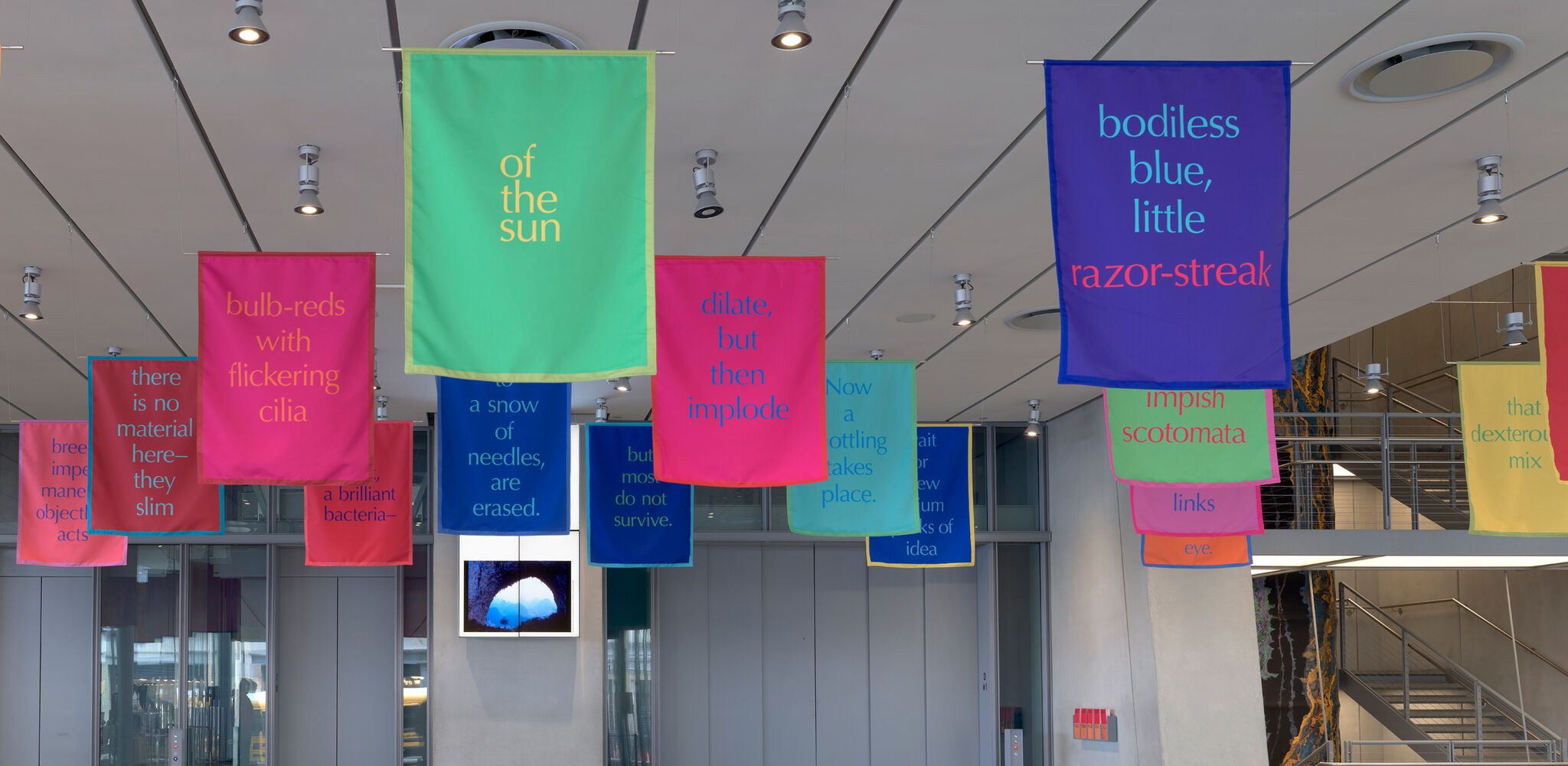Whitney Biennial 2022: Quiet as It’s Kept | Art & Artists
Apr 6–Oct 16, 2022
Whitney Biennial 2022: Quiet as It’s Kept | Art & Artists
Renée Green
27
Floors 1 and 5
Born 1959 in Cleveland, OH
Lives in Somerville, MA, and New York, NY
Renée Green’s 1989 painting Lesson features some of the formal and conceptual strategies also deployed in her Space Poems, one of which is on view in the Museum’s Lobby. Green has described the work as “a reflection on museums and their collections—it includes a collection within itself. As I encounter it again, I’m finding within it fragments of my subsequent experiments: I noticed how I was able to bring language into my work in ways that reflected what I wanted to express, how language has always been there. I was painting throughout the ‘80s; over the years, I’ve been exploring ways I prefer to think and imagine, my constellations. I’ve been looking at old journals, and I wonder about this younger person describing how she’d like to create her own framework, one that people could enter into if they’d like. With my work, I issue invitations.”
Space Poem #7 (Color Without Objects: Intra-Active May-Words), 2020
-
0:00
Renée Green, Space Poem #7 (Color Without Objects: Intra-Active May-Words)
0:00
Narrator: Adrienne Edwards is one of the curators of the Whitney Biennial 2022: Quiet as It’s Kept. She discusses one of Renée Green’s Space Poems, which are the banners hanging from the ceiling.
Adrienne Edwards: Renée uses very poetic, abstract, sometimes oblique language that sort of functions to open our mind as to how we understand what we think we understand, how we encounter information, because it has almost an advertising kind of sensibility. It’s interesting: that kind of slippage between expecting to be told something as opposed to being presented with the opportunity to think magically in a way about something.
Narrator: Renée Green talked about the series.
Renée Green: Space Poems are open-ended wavelengths very often in serial forms. I chose it as a way of working because it is so capacious. I’m looking for different kinds of resonances. Each one is different and I’m always collecting ideas for the Space Poems. I would say my work over time is try to find distillations throughout. I’m always trying to do that. And so it would be refining it in a way, almost like a poem.

